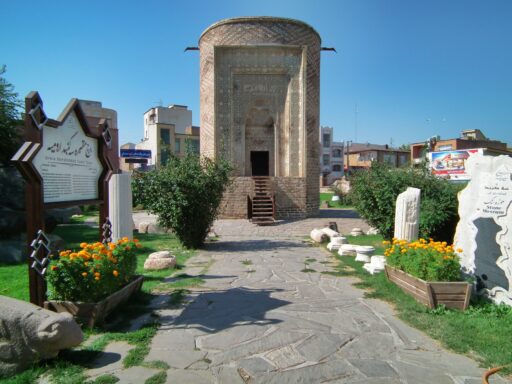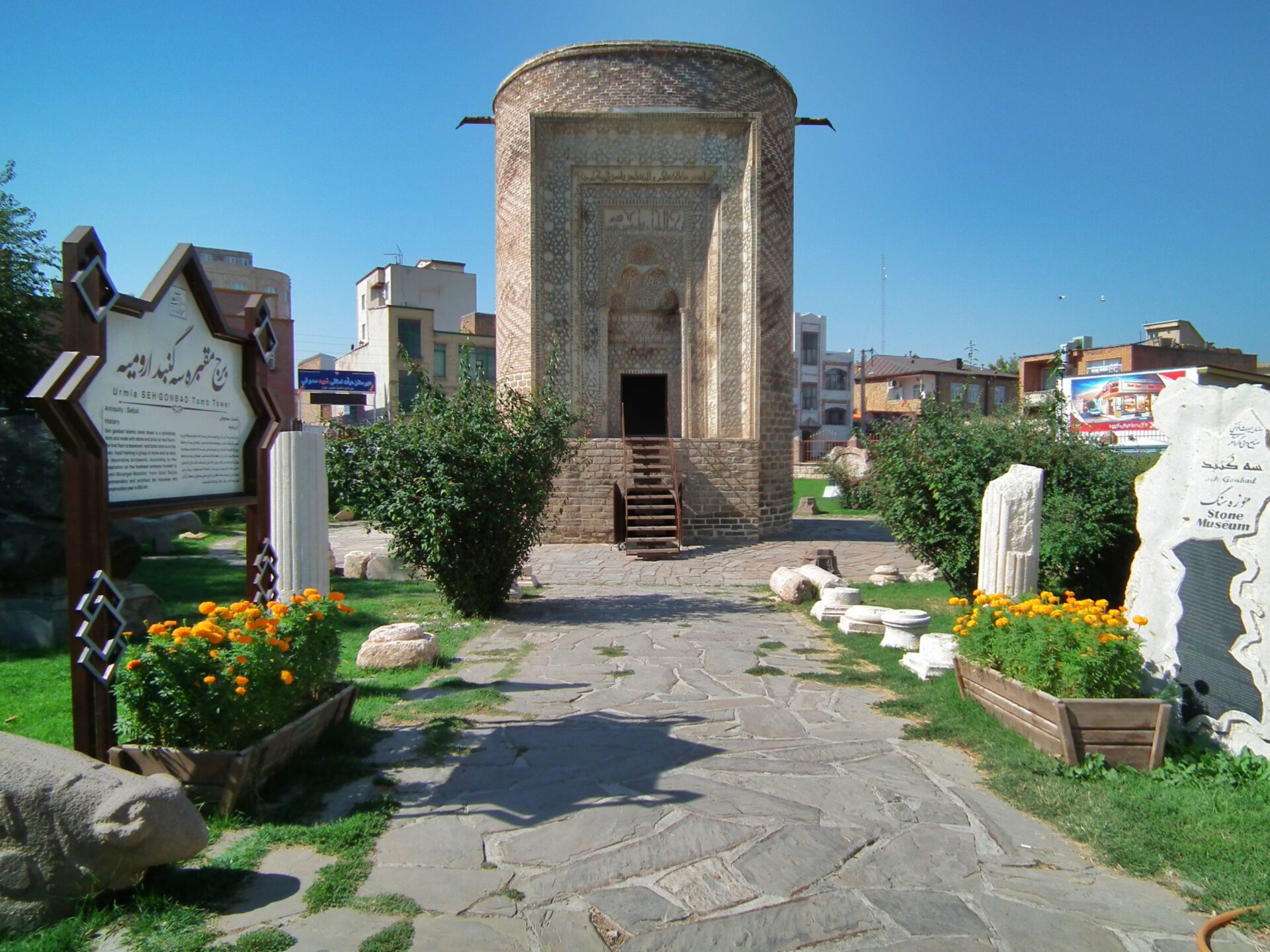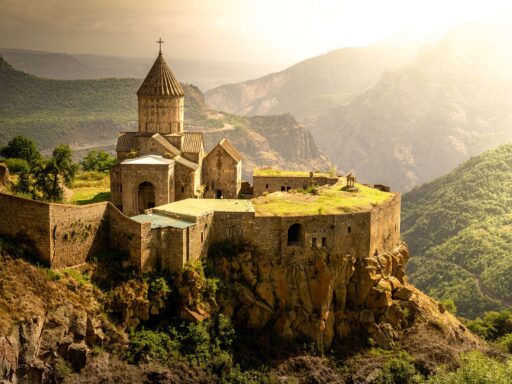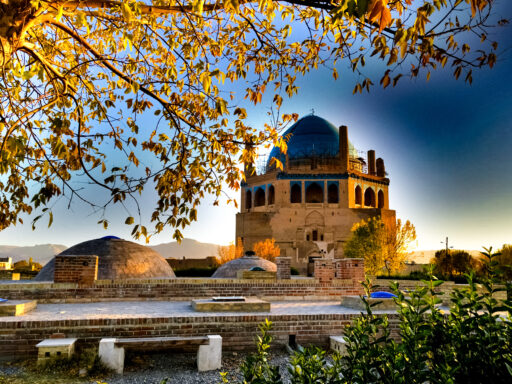The city of Urmia in northwest Iran is home to one of the country’s most impressive monuments – the 12th century Segonbad, also known as the Kabud Mosque. This magnificent tomb tower is an excellent example of Seljuk architecture and has become a symbol of Urmia. With its turquoise domes and intricate brickwork patterns, Segonbad stands out in the city skyline. In this article, we’ll take a closer look at this historic structure – its history, architecture, and significance.
Overview of Segonbad
Segonbad is located in the central part of Urmia city, in the Segonbad Square. The tower tomb was built in 1198 CE during the Turkic Seljuk Empire for Princess Bibi Fatimeh Soltan Bakht Agha, the sister of the Seljuk Sultan Toghrul III. It takes the form of a cylindrical tower over a cubical crypt chamber. The tower itself stands at a height of 25 meters and has a diameter of 17 meters.
The exterior of the tower features intricate geometric brick patterns set against a backdrop of turquoise tiles. The patterns create a mesmerizing decorative effect as they draw the eye upwards towards the top of the tower which is crowned by a conical dome covered in turquoise tiles. The dome itself is 12 meters high with a diameter of 10 meters at its base.

Architectural Style & Influences
Segonbad exemplifies the Seljuk architectural style which combines Persian and Mesopotamian building traditions. Seljuk architecture is characterized by the use of bricks and plaster as the main building materials and elaborately decorated exterior surfaces. Geometric motifs and Kufic calligraphy are common decorative elements.
The tomb tower form itself was likely inspired by similar structures that already existed in Central Asia and Mesopotamia. However, Segonbad stands out for its perfect proportions and extensive use of turquoise tiles on the exterior. The rich turquoise color gives it a unique and immediately recognizable identity.
Some specific features that reflect the Seljuk style include:
- Cylindrical tower shape
- Conical dome
- Geometric brick patterns
- Turquoise glazed tilework
- Kufic inscriptions
So while influenced by earlier regional traditions, Segonbad synthesized these elements into a new and aesthetically powerful form. The technical execution also set a new standard.

Significance & Legacy
Segonbad is among the most famous Seljuk monuments in Iran today. It stands out not only for its striking beauty but also its architectural and historic significance.
Some key facts about its significance include:
- One of the best examples of 12th century Seljuk tomb tower architecture
- Reflects the power and artistic sophistication of the Seljuk Empire at its peak
- Its perfectly proportional shape and tilework make it an architectural masterpiece
- Became a model for future mausoleum design in Iran
- Symbol of Urmia’s history and artistic heritage
The Segonbad went on to directly influence later tomb towers built around Iran. Variations based on its design can be seen in Yazd, Isfahan, and Mashhad. Elements of its aesthetic also filtered into other building types such as mosques. Along with being an architectural landmark, it has also gained status as the symbol of Urmia. Images of its iconic shape appear on the city’s coat of arms and souvenirs.
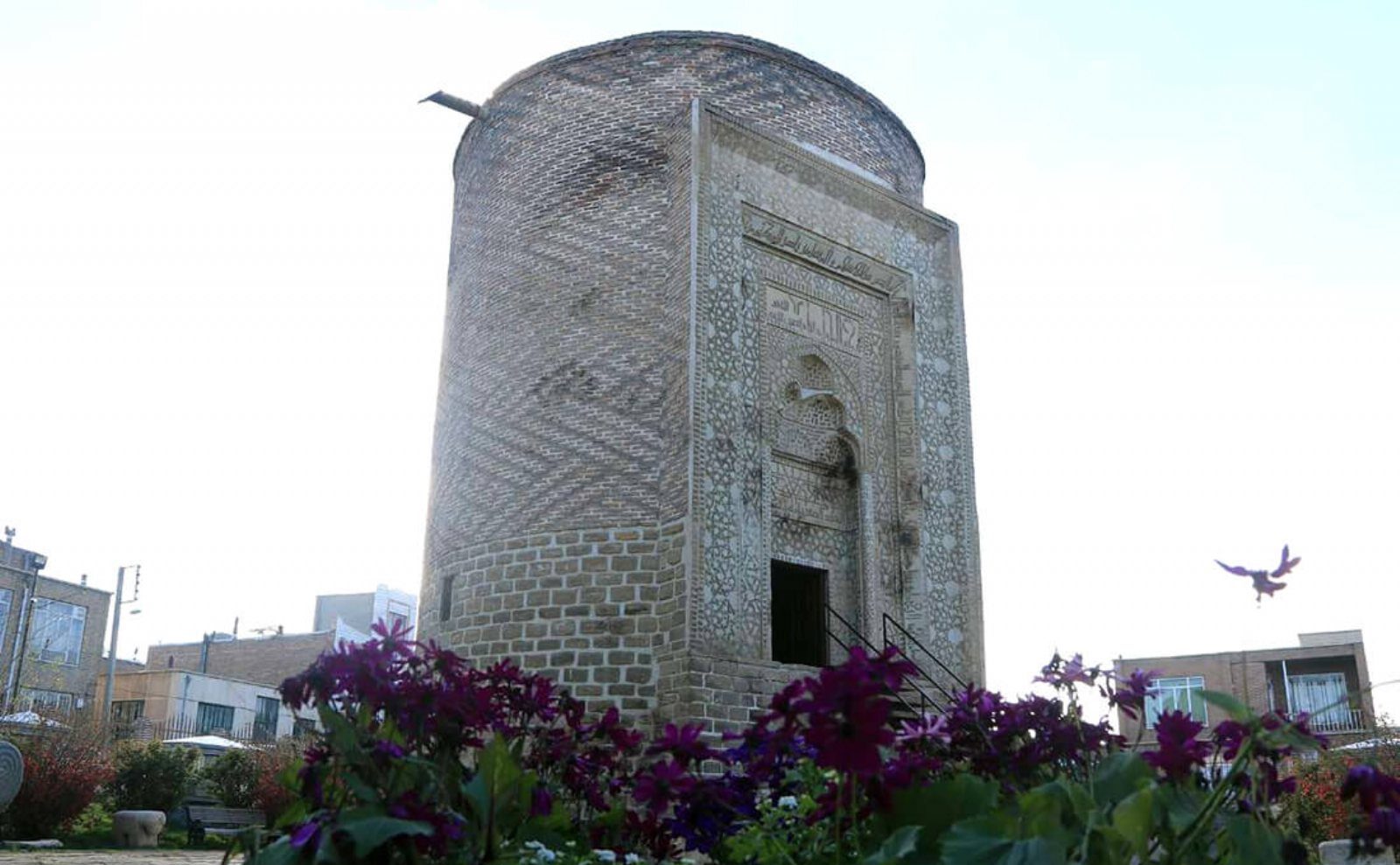
Visiting Segonbad Today
Segonbad remains remarkably well-preserved today, allowing visitors to admire its medieval Seljuk craftsmanship. It sits at the center of the Segonbad Square in downtown Urmia, surrounded by gardens and fountains.
The tomb tower can be visited from the outside during daylight hours for free. At night, it is lit up, offering a spectacular view as the turquoise tiles glow against the night sky.
For a small fee, visitors can also access the interior crypt chamber located directly beneath the tower. Inside, they can see the austere interior decoration including vaulted ceilings and bare brick walls.
The Segonbad is best appreciated by taking in both exterior and interior. Walking around the base of the tower lets you admire how the decorative patterns change and unfold. Going inside provides a sense of the structure’s height and mass. With its unrivaled beauty and flawless proportions, Segonbad deserves its reputation as one of the finest works of Iranian Islamic architecture.
Conclusion
Segonbad stands out for its architectural brilliance and aesthetic appeal. The 12th century tomb tower has become an iconic part of Urmia’s identity and one of Iran’s most famous Seljuk monuments. With its turquoise dome, perfectly proportional tower, and ornate brick patterning, Segonbad represents a pinnacle of medieval tomb design in Iran. Both an important heritage landmark and beautiful work of art, Segonbad is a must-see for anyone visiting Urmia. Its majestic presence is a testament to the artistic genius of Seljuk architects and craftsmen.

